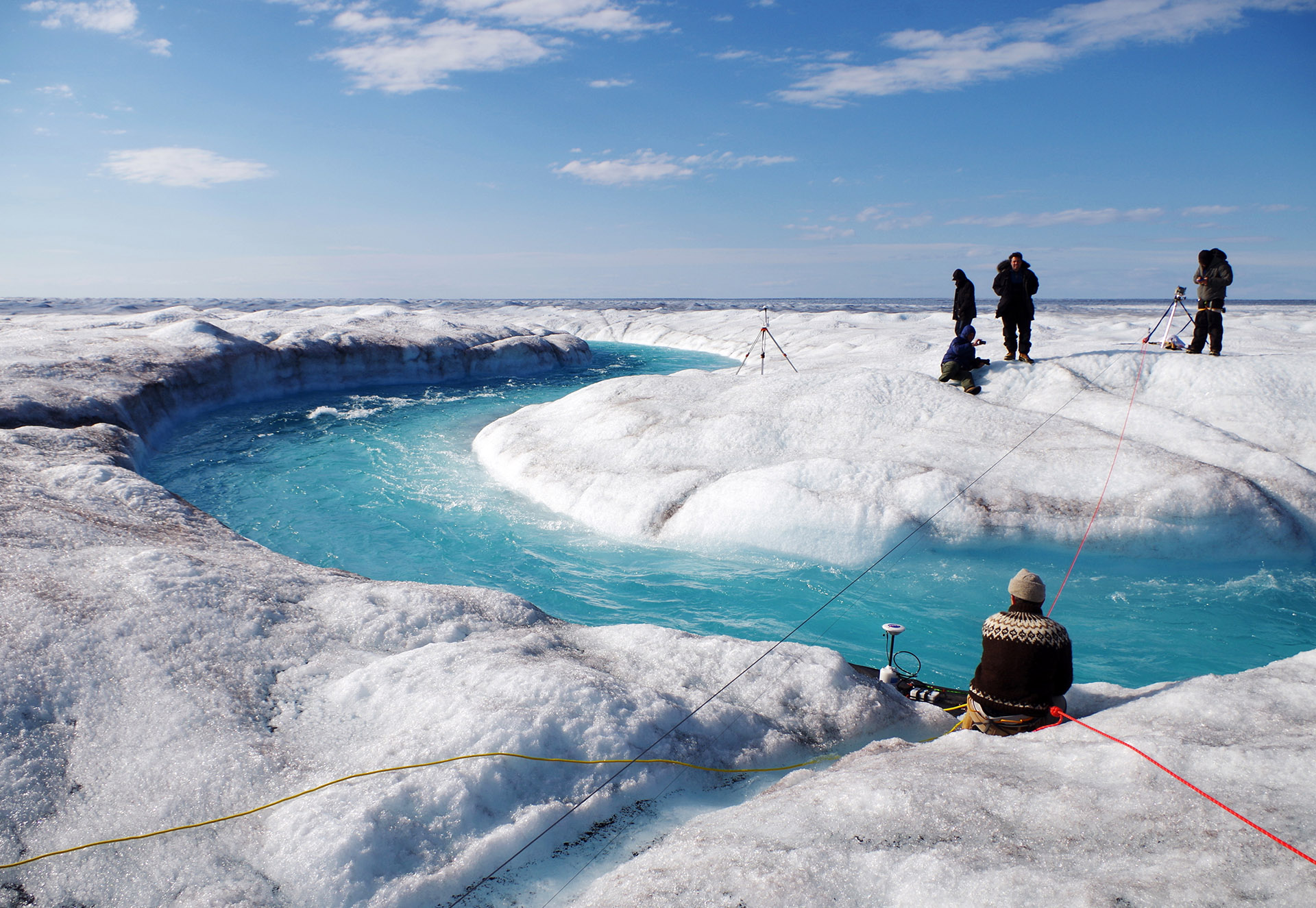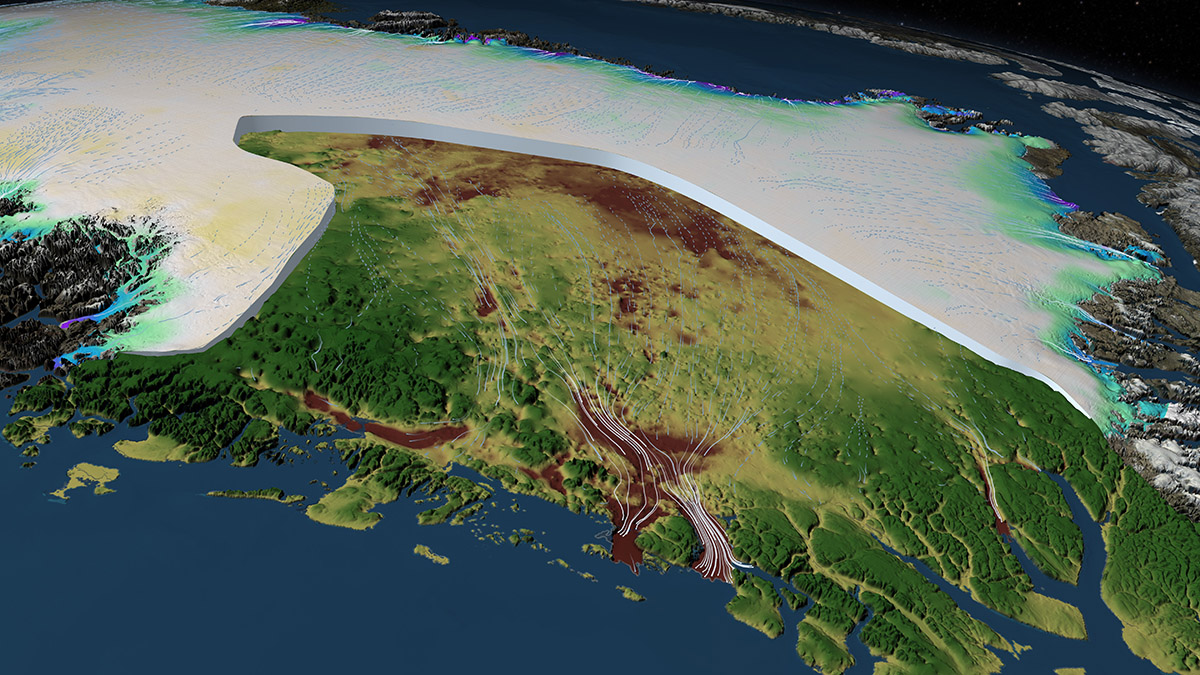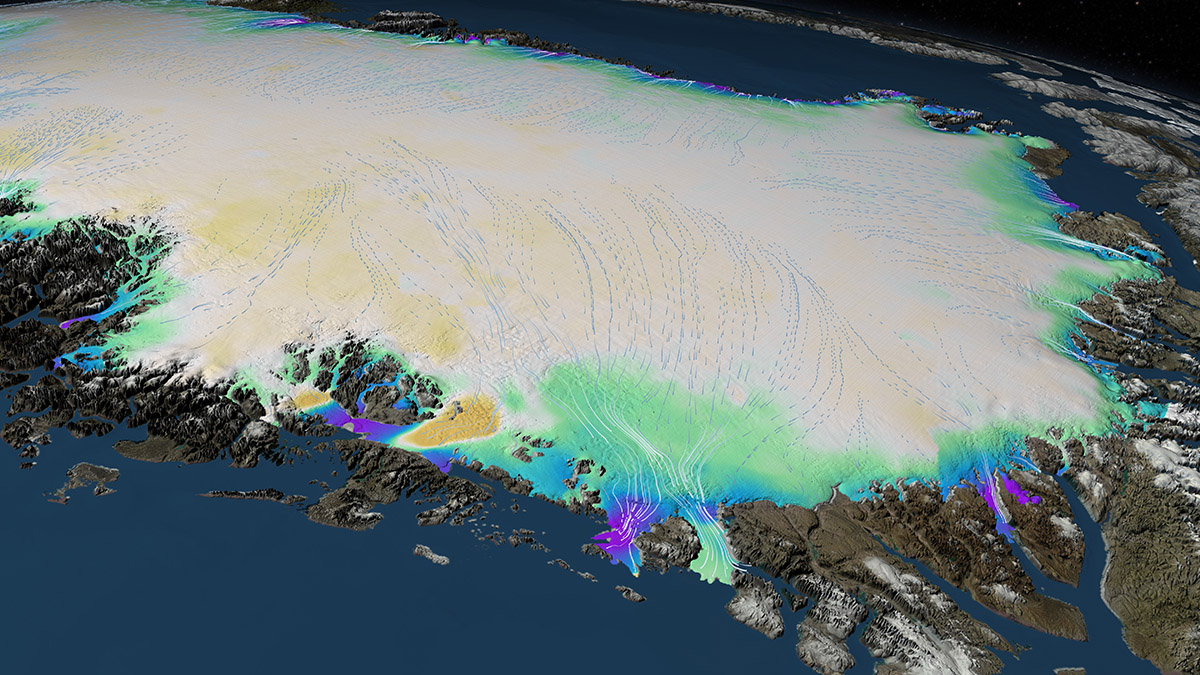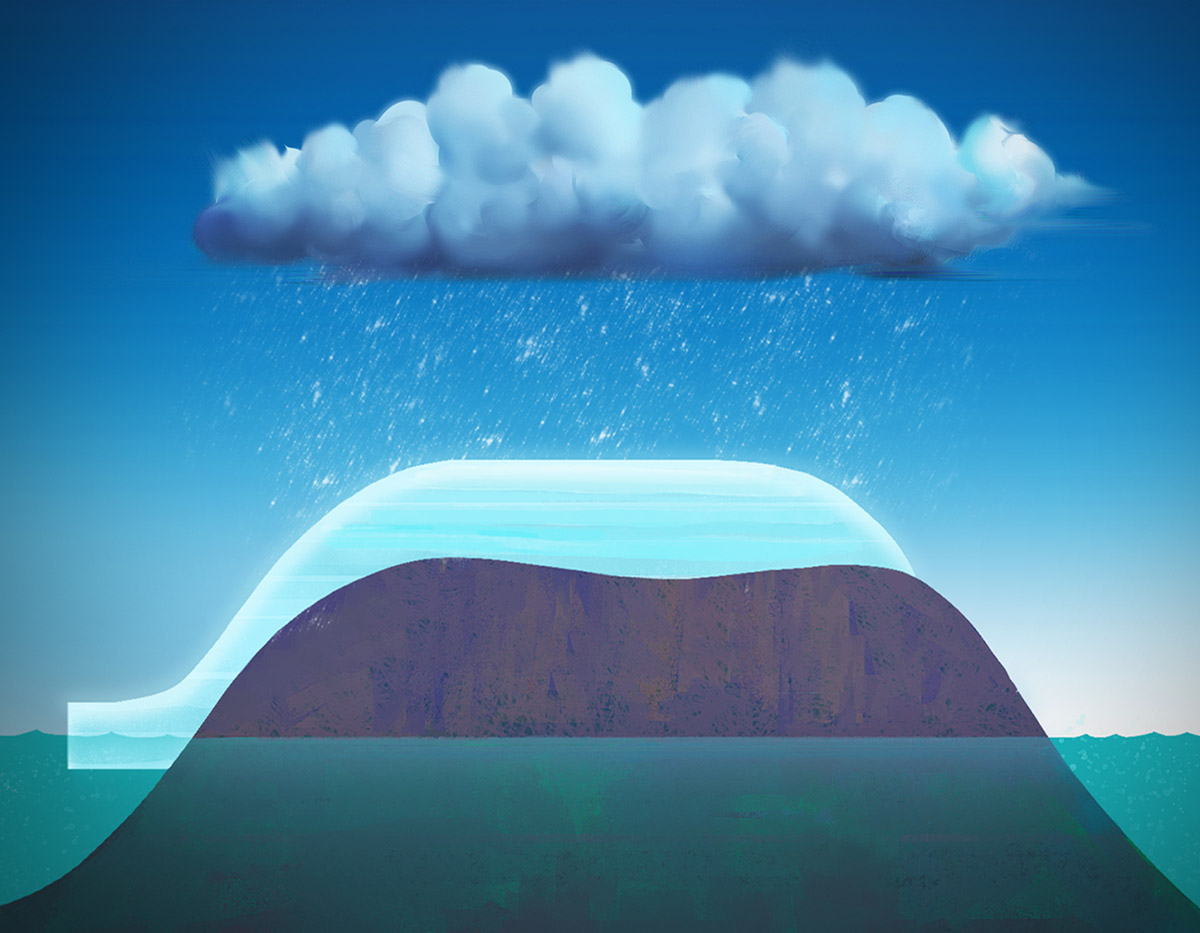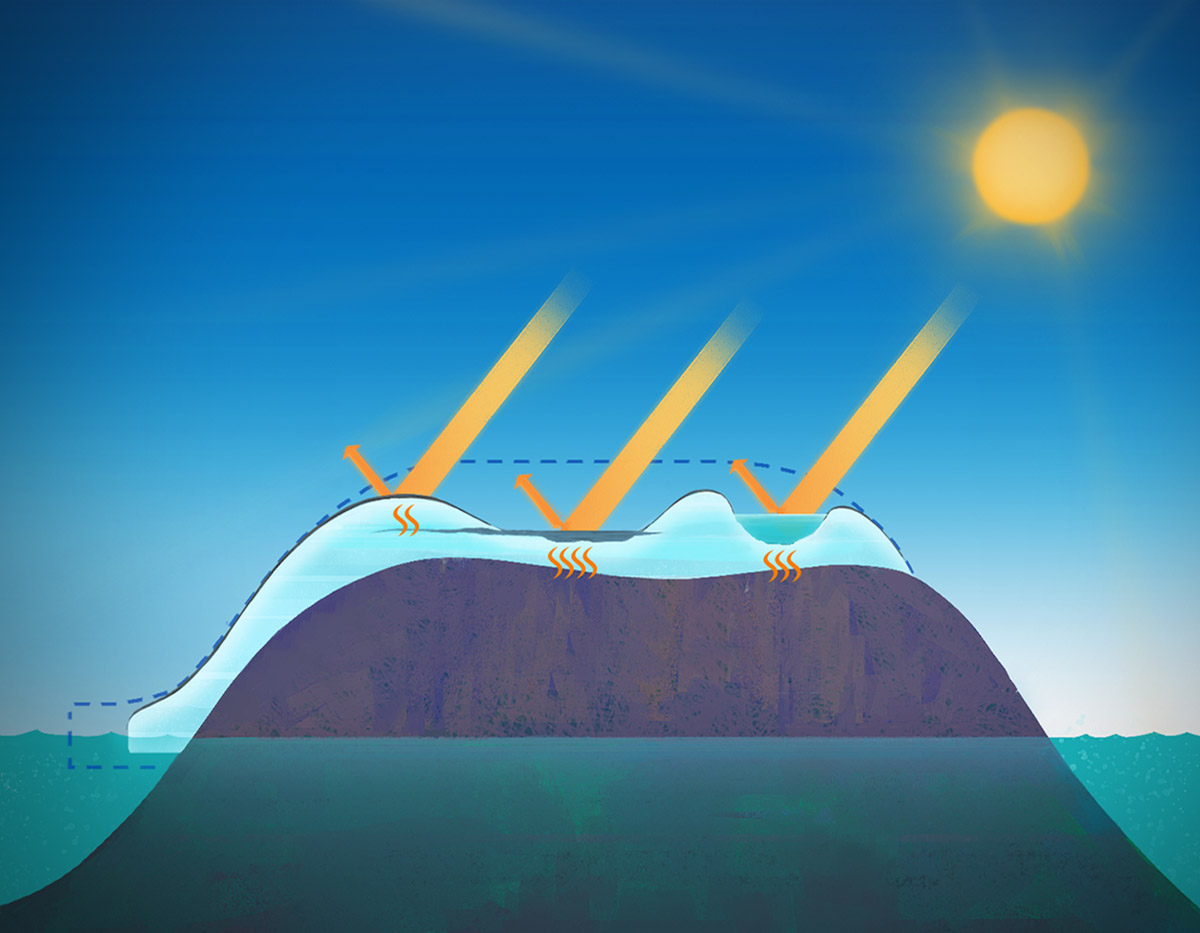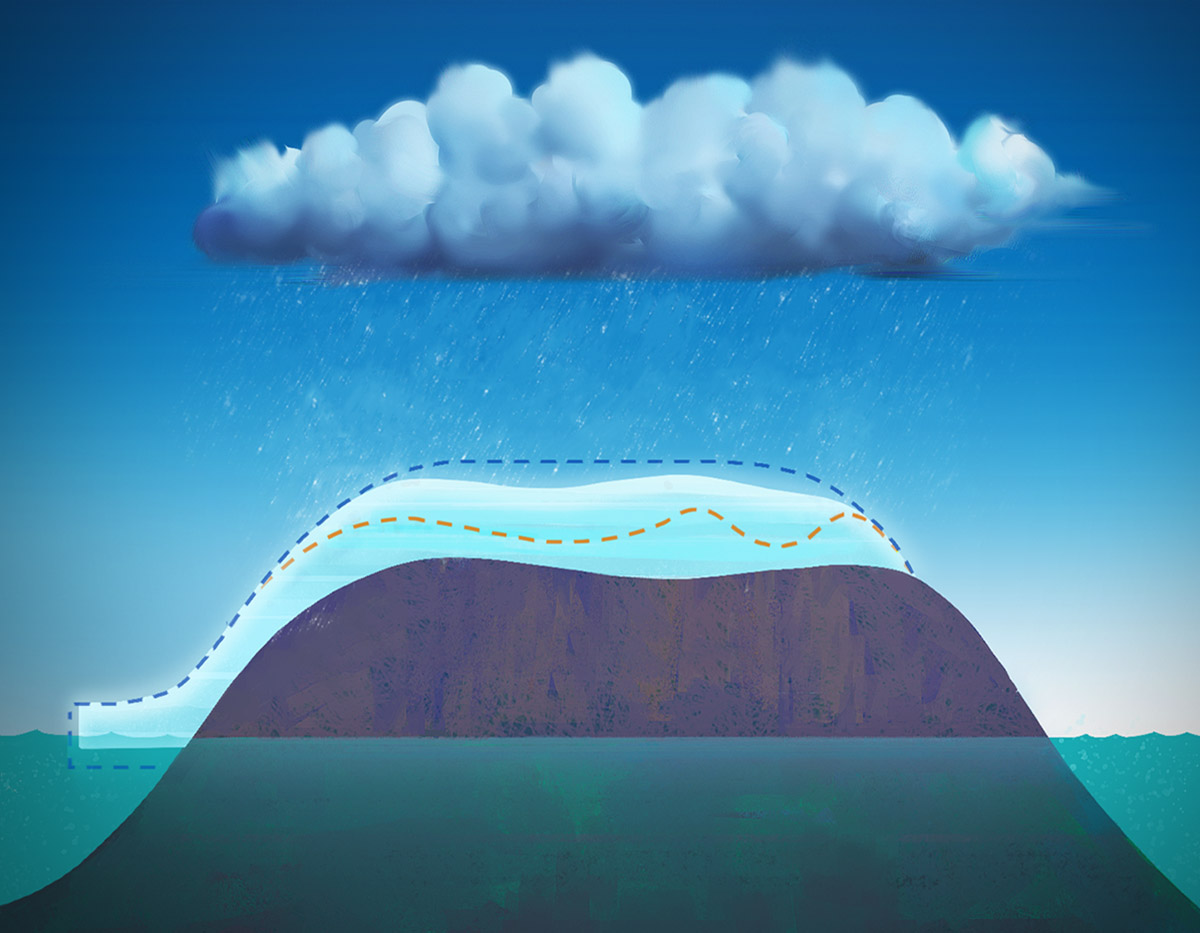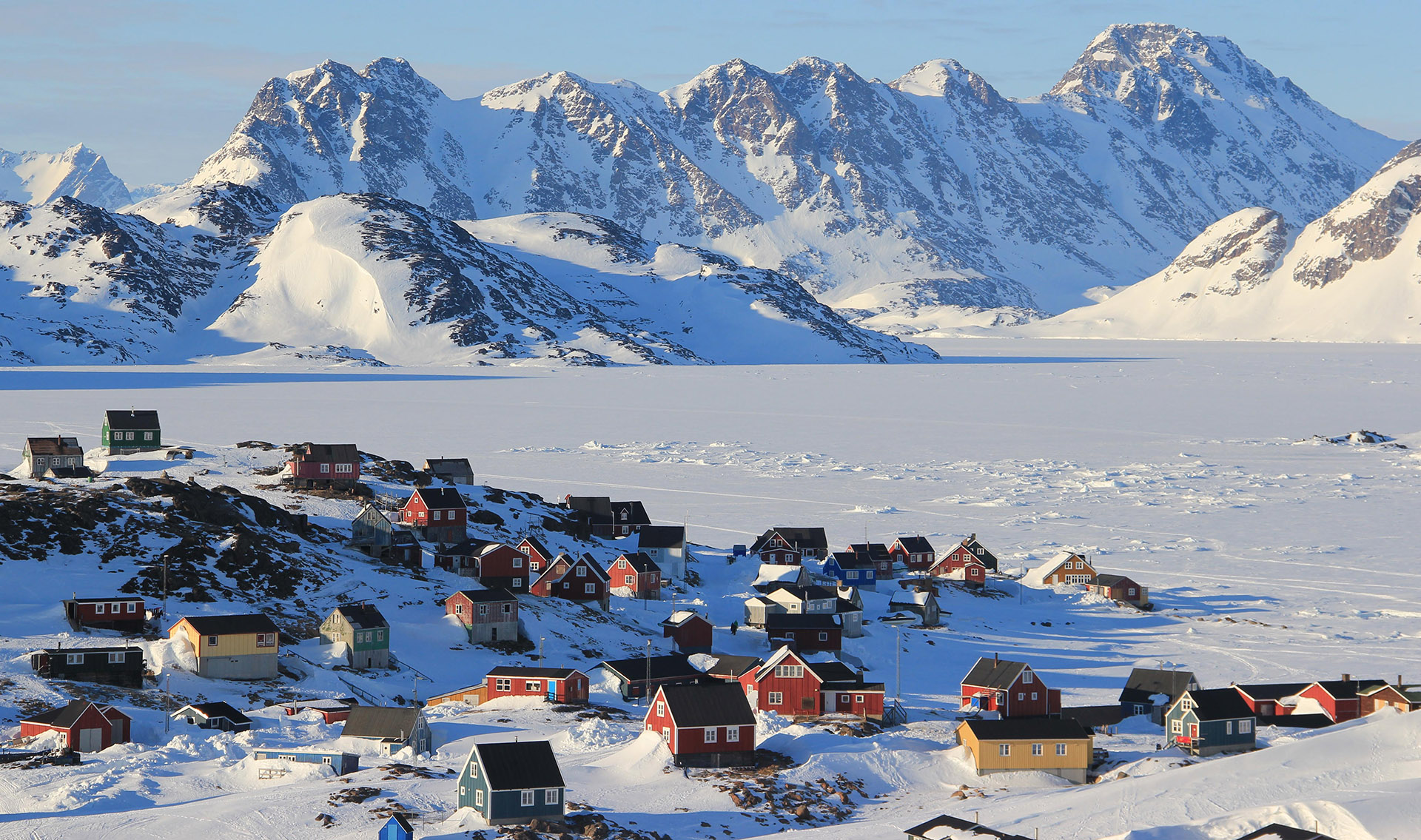
Greenland
A Changing Ice Sheet
Under Greenland’s sheet of snow and ice and howling winter winds lies a secret United States military base. Camp Century was constructed in 1966 at the height of the nuclear weapons standoff between the United States and the former Soviet Union. Huge machines dug deep trenches into the snow and ice, making enough room to house the world’s first portable nuclear reactor along with indoor plumbing, dormitories, bathrooms, a kitchen, a chapel, and even a barber shop. The engineers covered everything in thick layers of snow to hide the base.
Unfortunately, a few years after construction, Greenland’s ice sheet shifted. The camp’s walls were crushed by the unstoppable advance of snow and ice. The US quickly abandoned the base. Government officials never thought they would see Camp Century again, expecting that each winter would cover it in more and more snow and ice.
But no one planned for global climate change. And few secrets remain buried forever.
Greenland’s ice sheet is melting faster than ever, and it threatens to uncover the decades-old nuclear and biochemical waste from Camp Century. If this waste makes its way to the ocean, it could trigger a massive ecological disaster. Now, the U.S. is trying to formulate a plan to solve a problem no one predicted back in 1966.
Why is Greenland’s ice sheet melting? To understand the melting, you first need to know about the geography of Greenland. The country is located high in the Arctic Circle, sandwiched between the continents of North America and Europe. Greenland is a massive island that is almost completely covered in a sheet of ice and snow, also known as a glacier. The ice sheet is about three times the size of Texas. In fact, it is the second largest body of ice after the continent of Antarctica. In some places, the ice is more than 2 kilometers thick (1.24 miles).
The ice sheet is the result of hundreds of thousands of years of precipitation. Each winter, snow falls on Greenland, and over time, the snow compresses into layers of ice. During the summer, solar radiation and warmer air temperatures cause some of this snow to melt. In the past, the snow lost to melting was replaced each winter by snowfall. But recently, more snow is melting in the summer than is falling in the winter. Why is this happening?
Have you ever tried to look at snow on a sunny day and had to shield your eyes? Snow reflects a lot of light. Because Greenland is mostly covered in a layer of snow, it reflects about 50% of the solar radiation that hits it. That reflection actually helps prevent the snow and ice from melting. The snow is not only reflecting light, but also heat. Reflected heat does not contribute to melting - it is sent back into the atmosphere. This has kept Greenland’s ice sheet fairly stable for a long time, but global climate change is altering longtime patterns.
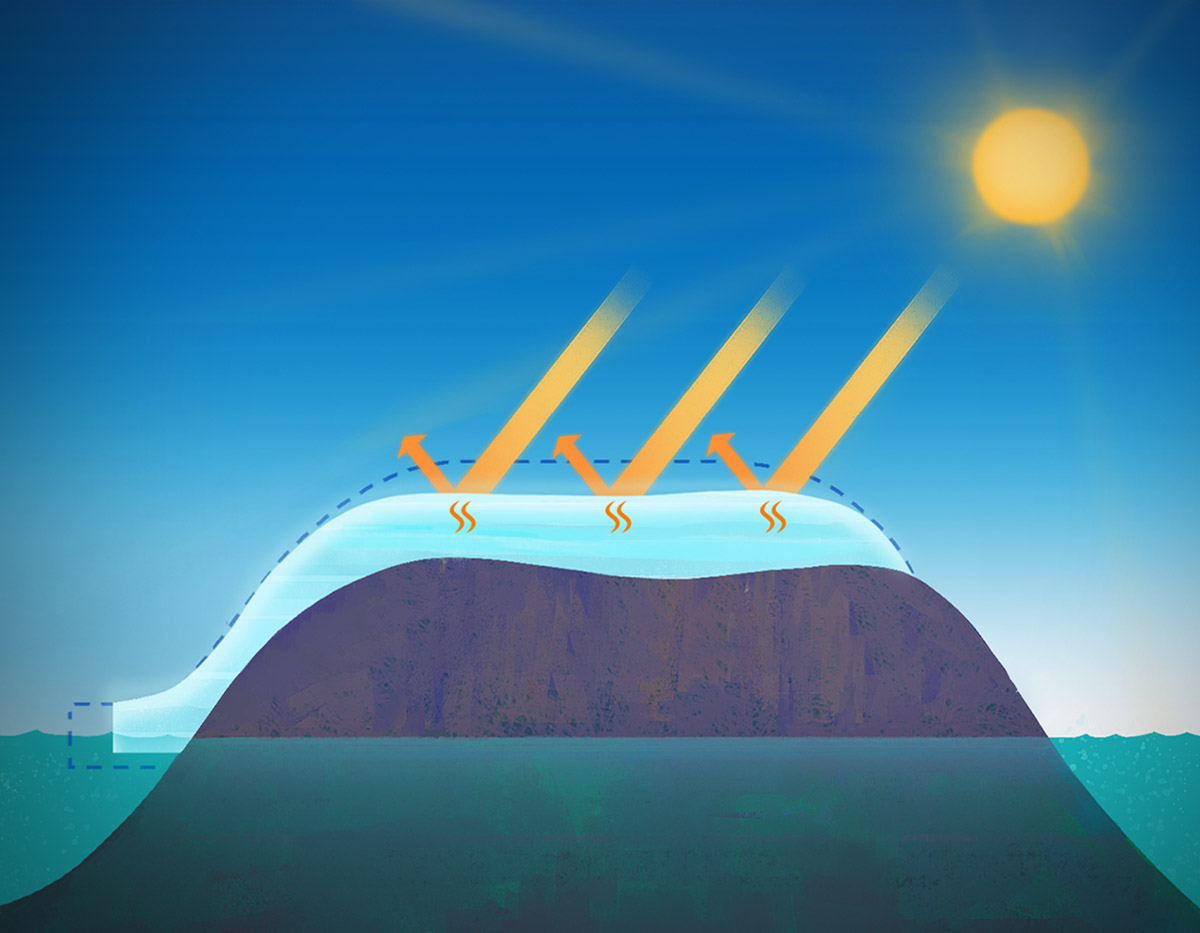
- Summer
- Winter
Climate change is linked to rising global air temperatures. This increase in air temperatures results in more snow melting in Greenland during the summer months than usual. As snow begins to melt, it can expose darker, older, soot-stained layers of snow and ice - and even the rock surface of the island. Melted snow collects in pools of water that are darker than the snow around them. These dark surfaces absorb more light and heat than white snow causing even more snowmelt. When this happens year after year, the ice sheet doesn’t regain enough snow and ice during the winter to replace what melted during the summer. Researchers have found that in recent years, almost the entire sheet of ice in Greenland has become less reflective, absorbing more light and heat. Climate scientists are concerned that the ice sheet might melt to a point where it cannot recover, and that it will melt faster and faster every year.
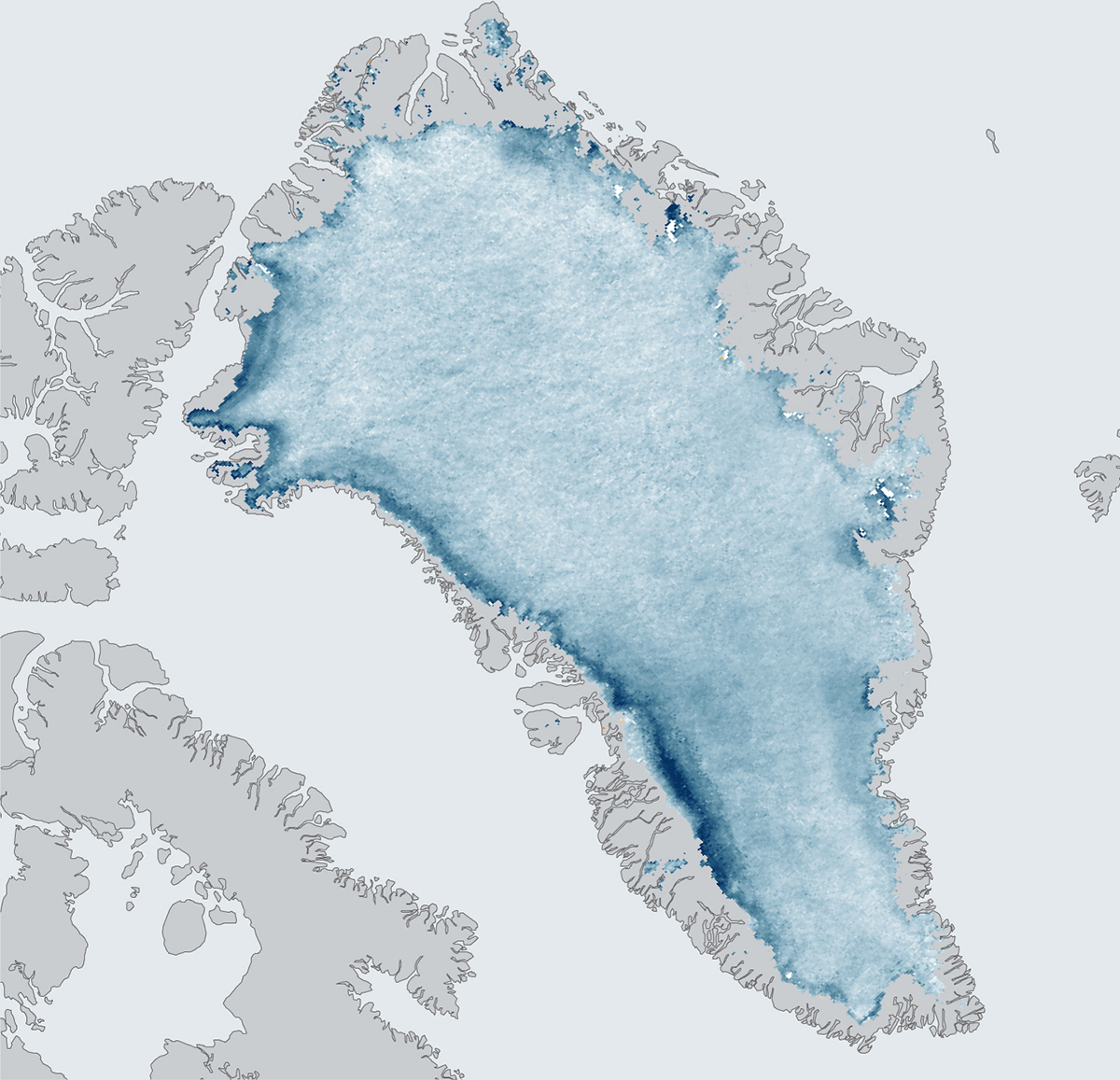
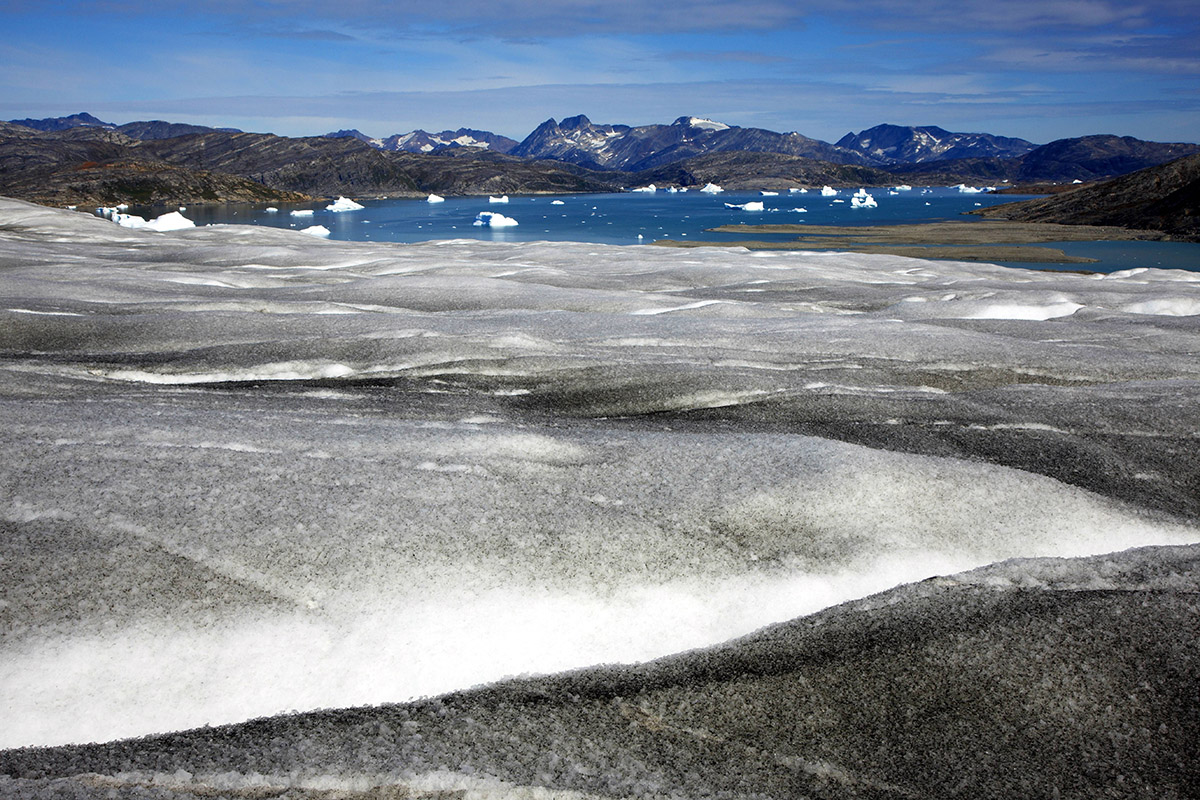
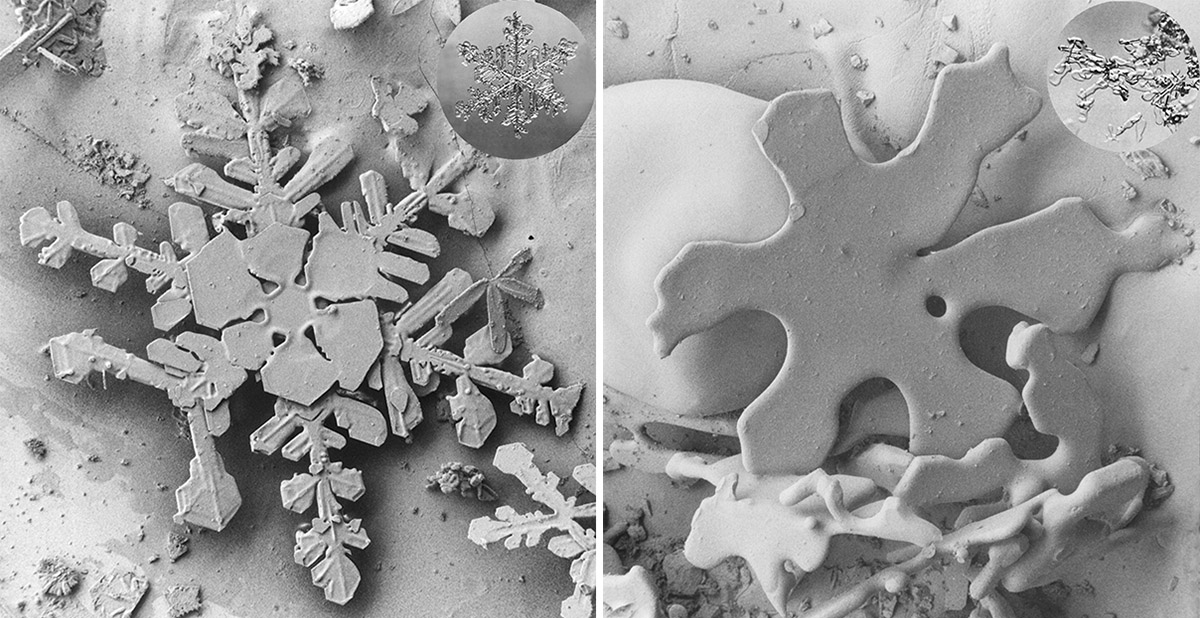
Why does it matter that Greenland’s ice sheet appears to be melting? The ice sheet contains almost 1.7 million km² of ice. If the entire ice sheet melted, it could raise the sea level by 6 meters. That’s almost 20 feet! Not only that, but the melting ice sheet could change the way the ocean circulates. The patterns in ocean circulation are based on water temperature and salinity. A large deposit of fresh water from Greenland’s ice sheet would change ocean salinity, which could change the path of ocean currents. Ocean currents help to determine regional climates, especially along coastlines.
What can humans do about the melting ice sheet? One step is to use technology to track the changes in Greenland as closely as possible. Satellites help to monitor how the reflectivity of the snow, the elevation of the ice sheet, and the area of the ice sheet change over time. Researchers collect ice cores to examine how both the ice sheet and the climate have changed in the past. And they deploy cameras that film 1,000 meter journeys into large holes formed from melting water that twist and turn from the surface of a glacier all the way to the underlying rock. Climate scientists are also trying to educate the public about the changing conditions in Greenland to motivate people to reduce their contribution to climate change. If humans can reduce emissions of greenhouse gases, rising global temperatures could slow or even stabilize.
